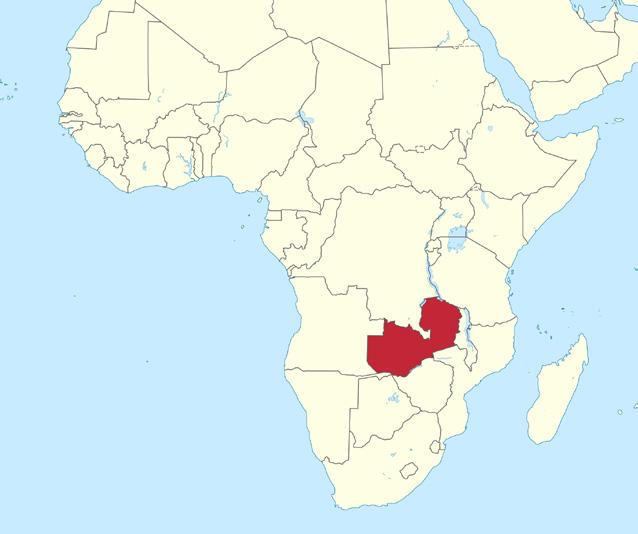
1 minute read
ZAMBIA
Copper’s importance to the global economy is good for investment.
Capital: Lusaka.
Advertisement
Other towns/cities: Kitwe, Ndola, Kabwe.
Population: 20.2-million (2023).
GDP: $25.7-billion (2017).
GDP per capita: $3 200 (2021).
Currency: Kwacha.
Regional Economic Community: Common Market for Eastern and South Africa (COMESA), Southern African Development Community (SADC).
Land mass: 752 617km².
Coastline: Landlocked.
Resources: Beef, cassava, maize, milk, vegetables, soybeans, beef, tobacco, groundnuts, sugar cane, wheat. Copper, coal, cobalt, emeralds, gemstones, lead, silver, uranium, zinc.
Main economic sectors: Copper mining and processing, emerald mining, chemicals, textiles, fertilizer.

Other sectors: Construction, foodstuffs, beverages, horticulture. New sectors for investment: Agribusiness, energy, retail and tourism property, telecoms.
Key projects: The International Finance Corporation has initiated the Multilateral Investment Guarantee Agency for projects in agribusiness, manufacturing, financial and energy sectors.
Chief exports: Copper, cement, gemstones, gold, tobacco.
Top export destinations: Switzerland, China, Namibia, Democratic Republic of the Congo, Singapore.
Top import sources: South Africa, China, United Arab Emirates, Democratic Republic of the Congo, India.
Main imports: Copper, fertilizers, medicines, petroleum, trucks.
Infrastructure: Roads: 67 671km, of which 14 888km paved.
Port: Mpulungu river port.
Airports: 88, eight of which are paved.
Railways: 3 126km, includes Tanzania-Zambia Railway Authority (TAZARA).
ICT: Mobile subscriptions per 100 inhabitants: 104.
Internet percentage of population: 21 (2021).
ICT Development Index 2017 (ITU) world ranking: 146 (17th in Africa).
Climate: Tropical climate modified by altitude and proximity to lakes. Lake Kariba is the world’s largest reservoir by volume and Lake Tanganyika is among other large lakes. The Congo and Zambezi are the major rivers. Rainy season is October to April.
Religion: Mostly Christian, of which 20% Catholic.
Modern history: Many of the population are poor and subsistence agriculture is widespread. Copper has underpinned Zambia’s export economy for many years. There has been a recent surge in interest because of copper’s importance to the cleaner industrial process that the world needs. Rapid growth has been experienced because of good copper prices on the global market but with the country’s population expected to triple by 2050, huge social challenges remain. In addition, being so dependent on copper can mean that the country’s economy, and its people, struggle when prices are depressed. The battle for independence culminated in Zambia being founded in 1964. The opening of the Tan-Zam railway line in 1975 allowed Zambian copper to be exported without relying on then Rhodesia or what was then apartheid South Africa. Kenneth Kaunda ruled a one-party state from 1972 to 1991, having been in power from independence. President Chiluba ruled from 1991 to 2001, after which a period of closely contested elections followed. In 2021, Hakainde Hichilema won 59% of the vote with 70% of the eligible voting public registering their choices.










